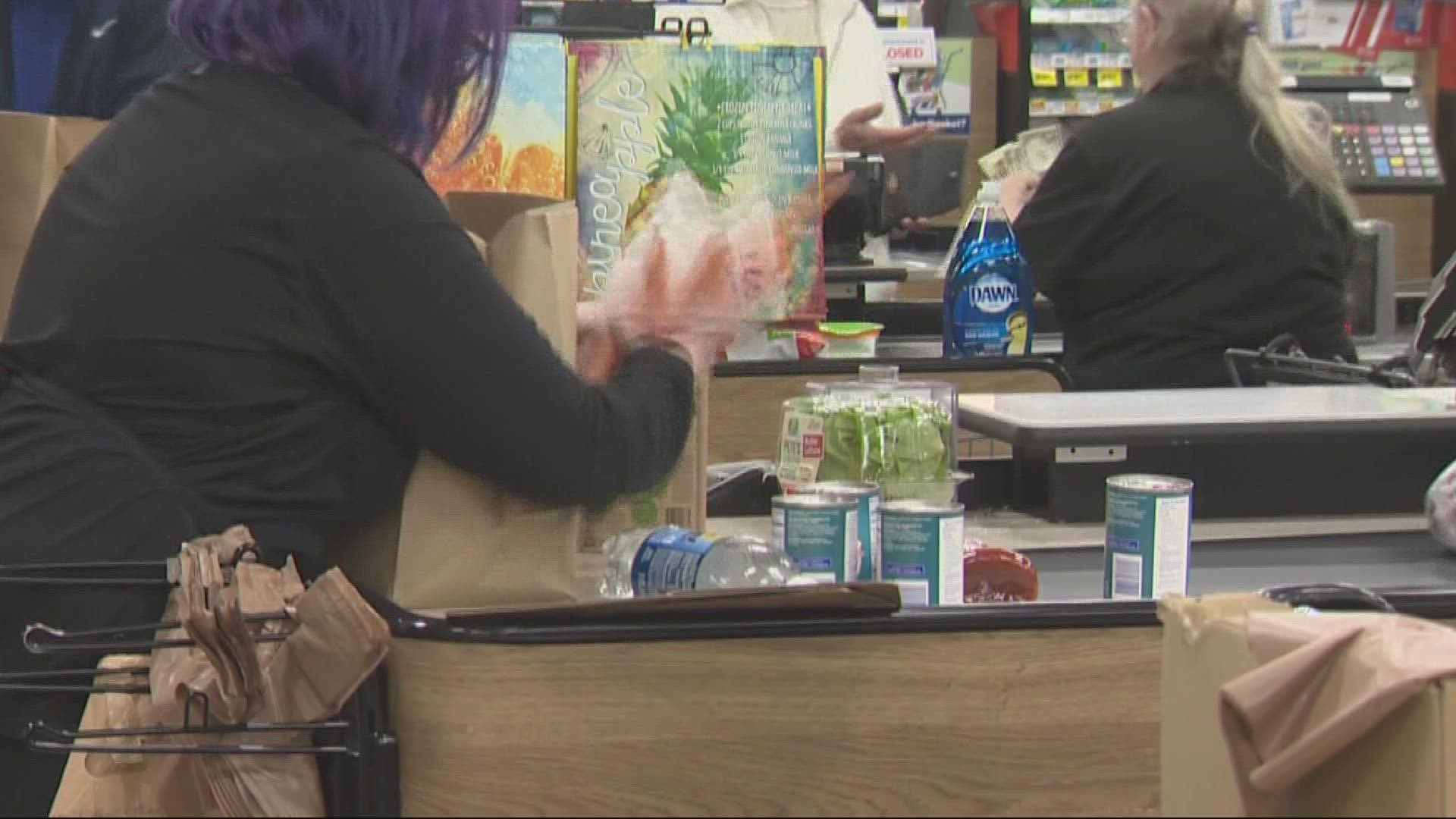PORTLAND, Ore. — For a matter of months, KGW has been covering how inflation is impacting all of us in a variety of ways. We all know that groceries are costing more. But how much more?
It’s normal for things to cost more over time, but recently the rate of increased costs has been astronomical. This week the U.S. Department of Labor announced that the U.S. inflation rate hit 9.1% in June. That’s the largest 12-month increase in more than 40 years.
We decided to take a trip to the grocery store to get a sense of how much more people are spending, comparing average price increases between February 2020 and June of 2022.
The increased cost of food ... and gas
Before we even get to the store, since the drive meant filling up the gas tank, it's worth noting that the cost of gas has skyrocketed 105% since February 2020, before the pandemic really took hold in the U.S. That’s according to the latest Consumer Price Index (CPI) data from the U.S. Bureau of Labor Statistics, which keeps track of average price fluctuations for a number of products, including a variety of grocery items and energy sources.
At the store we picked up some staples: eggs, chicken, milk and oranges.
The CPI tracks the cost of milk, which was among the food items that went up the most in price when compared to other foods on the CPI list. Between February 2020 and June 2022, milk went from $3.20 a gallon to $4.15, an increase of 30%.
Back in February of 2020 a dozen eggs cost, on average, about $1.45. Fast forward to June of this year, and they’re now $2.71 per dozen. That’s an increase of 87%.
In the same time span, chicken went from $1.36 a pound to $1.83 a pound, up 35%.
Oranges went up in price by 31%.
So how much more are we actually spending?
In February of 2020, a shopper who bought a couple pounds of chicken, a carton of eggs, a gallon of milk and a few pounds of oranges would spend about $11.03. In June of this year, the same stuff would cost $15.32. The cost difference may not seem like a whole lot, but it adds up each week.
“We're all adjusting to a new reality,” said Tom Gillpatrick, a Portland State University professor who teaches courses in marketing and consumer behavior. “It's a struggle for many.”
How did we get here?
Gilpatrick said that a confluence of factors brought us to the land of soaring prices where we dwell these days.
"Demand’s up, supply is down, supply chain struggles, increased risk, the war in Ukraine, energy costs, have all combined to make our lives more challenged,” Gillpatrick said.
He said other parts of the world are also suffering from higher prices due to what's happening internationally.
"Something that happens in Eastern Europe or in Asia reverberates around the world, and we pay prices for that as well," said Gillpatrick.
For added context
An increase of two to three percent in inflation each year is standard, Gillpatrick said. While KGW compared average prices from right before the pandemic to June of 2022, if you look at the 12-month average prices, inflation has still been high. For some foods inflation in the last year has increased between 12% to 24%.
Additionally, CPI data reflects national price averages. Grocery shoppers in different parts of the country may pay slightly different amounts. For instance, CPI data showed a gallon of milk cost, on average, $4.15 per gallon. But at a Portland-area grocery store, we purchased a gallon of milk for $5.49, though it was from a local supplier.
The USDA recently updated its website with a new food price forecast for 2022. It said that all food prices are predicted to increase between 7.5% and 8.5%.
Saving money
Gillpatrick said that in an effort to save money, some people are buying half gallons of milk rather than a full gallon. While that saves money in the moment, the practice can actually be more expensive if you take into account the cost per ounce. Additionally, Gillpatrick said some people are opting to buy items that are of a lower quality and price point.
An easy method to save money is to download grocery store apps. Often, digital coupons can help shoppers easily save money on items they may have already planned to buy. In some cases, certain deals can only be used if the shopper has the grocery store’s app.
A look back
In most contexts, the "good old days" probably never existed — every era has its problems. But to our eyes, the prices of the past sure look enticing.
The photos below were posted on the Oregon Historical Society's Digital Collection. It's unclear who took the photos, but they are believed to have been taken around 1965.

